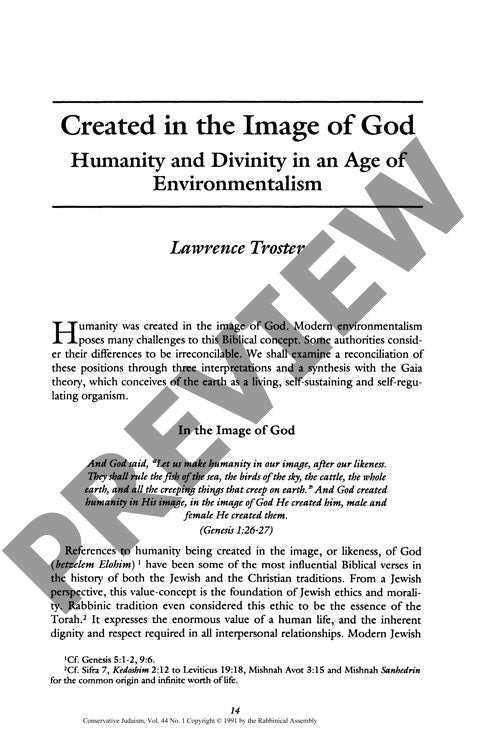Created in the Image of God Humanity And
Couldn't load pickup availability
The ancient Biblical concept of humanity being created "in the image of God" (betzelem Elohim) appears to clash fundamentally with modern environmental ethics, particularly deep ecology's biocentric worldview. Yet a careful analysis combining traditional Jewish interpretative methods (peshat, derash, and remez) with contemporary environmental theory reveals an unexpected synthesis. Through the lens of James Lovelock's Gaia hypothesis, which views Earth as a living, self-regulating organism, the seeming conflict between religious anthropocentrism and ecological consciousness dissolves. While secular challenges from Copernican cosmology, evolutionary theory, and radical environmentalism have contested humanity's special status in creation, biocentrism itself paradoxically maintains human privilege through moral sensibility toward nature. Multiple hermeneutical perspectives show that the "image of God" concept actually portrays humanity as a nexus between divine and natural realms rather than as separate from nature. A panentheistic understanding of God—as both transcendent and immanent—reconciles Jewish ethics with ecological consciousness. In this framework, humans function as Gaia's "brain cells," possessing unique cognitive abilities for environmental stewardship while remaining integral parts of the living Earth system. This synthesis preserves Jewish moral foundations while fostering genuine ecological sensitivity, proposing that environmental consciousness represents humanity's maturation into its divine image.

More Information
-
Physical Description
-
Publication Information
Published 1991
ISBN
-
Publication Credits
Lawrence Troster

